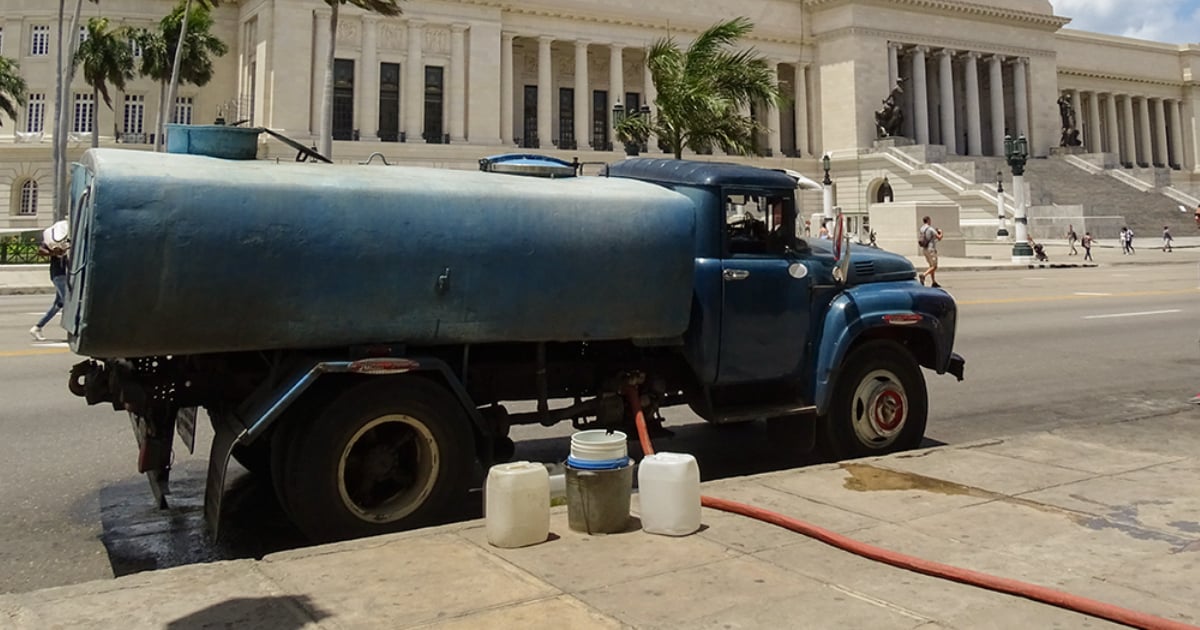Aguas de La Habana announced operational adjustments this Wednesday following the shutdown of pumping equipment at the Ariguanabo water supply source due to breakdowns, significantly worsening the water supply crisis faced by residents of the capital.
Through the social network Facebook, the entity informed users residing in the western part of the city about the service halt to carry out necessary repairs, stating that currently, only five of the 12 required units are operational. This has led to a distribution by specific circuits.
The situation has been exacerbated by a shortage of pumping equipment, adding to other reported issues like the lack of resources in the hydraulic infrastructure and frequent power outages.
The pressing question among residents is: When will the regime take effective measures to resolve this critical situation? The lack of immediate solutions is severely affecting the quality of life for Habaneros, who are facing an increasingly complex and urgent problem.
A resident of the lower Vedado area told CiberCuba that water hasn't entered his home for 40 days, and indeed, complaints are rife on the mentioned social network post, with all the justified reasons.
"It's not enough with the electricity outages, lack of transportation, and food shortages, now there's also a lack of water. It’s a 100 percent inefficient system," wrote one internet user in response.
Meanwhile, young Claudia Castillo shared her ordeal: "In Punta Brava, water only reached the high zone, and many houses were left without it because five days ago was the last time we got some, and it was just a little because there was no pressure."
"This greatly affects the quality of life, and we don't even need to mention that it’s already pretty bad for Cubans. Please, water is vital; we can't live without it. Between the heat, diseases, and lack of food, we'll dehydrate if we are deprived of water for so many days," she added.
"You can't live like this. It's abusive that I don't even have drinking water at home, with a small child, and I imagine many mothers, elderly, or anyone else feel the same because it's vital for everyone," Castillo wrote in frustration.
Dozens of residents from the San Miguel del Padrón municipality in Havana took to the streets Saturday night to protest the acute electricity and water shortages they have been suffering recently.
Shouting "turn on the water" and banging pots, a group of Cubans protested in the San Francisco de Paula neighborhood and marched through its streets, eventually stopping at the Calzada de Güines.
While this scenario is happening almost throughout the island, Havana is facing a severe crisis, with hundreds of thousands of citizens suffering frequent interruptions in access to the vital liquid.
The causes were unknown until last week when Antonio Rodríguez Rodríguez, president of the National Institute of Hydraulic Resources (INRH), made brief statements to the local weekly Tribuna de La Habana. According to the publication, Rodríguez explained that the identified problems are closely linked to the lack of hydraulic infrastructure resources and power supply interruptions, complicating the situation further.
To calm the public, the president of INRH stated that the necessary equipment is expected to arrive between September and December, which will improve service and extend it to currently underserved areas.
Addressing Havana's Water Supply Crisis
The ongoing water crisis in Havana has left many residents in desperate need. Here are some frequently asked questions about the situation and the measures being taken to address it.
What caused the current water crisis in Havana?
The crisis was triggered by the breakdown of pumping equipment at the Ariguanabo water supply source, compounded by a shortage of resources in the hydraulic infrastructure and frequent power outages.
How are residents coping with the lack of water?
Many residents are struggling, with some areas having gone without water for over a month. Protests have erupted, with people demanding immediate solutions from the government.
What actions are being taken to resolve the water crisis?
The president of the National Institute of Hydraulic Resources announced that new equipment is expected to arrive between September and December, which should improve water distribution and service.
